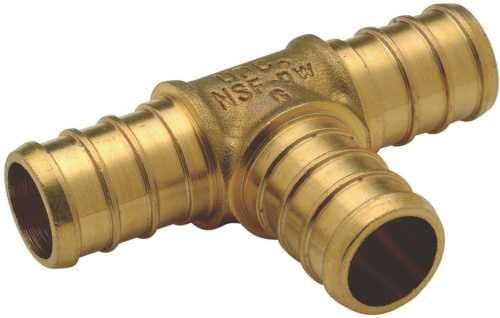In the realm of plumbing, technology is continually advancing, and one of the most significant innovations in recent years is the introduction of PEX (cross-linked polyethylene) pipes. This material has quickly become a preferred choice for both residential and commercial plumbing due to its durability, flexibility, and ease of installation. While PEX pipes have primarily been used for indoor plumbing, their underground application has gained increasing attention in recent years, further solidifying PEX as a versatile solution for plumbing systems.
Understanding PEX and Its Advantages
PEX is a synthetic plastic polymer that has been treated to enhance its properties, making it both strong and flexible. Unlike traditional copper pipes or PVC pipes, PEX can expand and contract without breaking, making it an excellent material for a variety of applications, including both hot and cold water systems. Its flexibility allows for easier installation, reducing the need for numerous joints and fittings, which can often be sources of leaks in traditional plumbing systems.
The advantages of PEX for underground plumbing are numerous. For starters, PEX is resistant to corrosion, scale buildup, and chlorine, which are common issues with metal pipes over time. It’s also highly resistant to freezing, which is a significant concern for underground pipes in colder climates. Unlike rigid pipes that can crack under freezing conditions, PEX has the ability to expand slightly, helping it withstand extreme temperatures.
Moreover, PEX is more affordable than copper and is often easier to install, requiring fewer specialized tools and less labor. This can result in cost savings both for the homeowner and the plumbing contractor.
PEX for Underground Plumbing Systems
While PEX is commonly used for indoor plumbing, its use in underground applications requires specific considerations. Plumbing systems that involve underground PEX are typically used for water service lines, irrigation systems, and even in some geothermal applications.
In underground settings, PEX has several notable advantages:
- Durability: PEX pipes are highly durable and able to withstand the rigors of underground environments. They are resistant to damage from harsh soil conditions, chemicals, and even the weight of the earth above. This makes PEX an ideal material for underground water supply lines or irrigation systems that may be exposed to rough or unpredictable conditions.
- Flexibility: PEX’s flexibility is particularly beneficial in underground applications. It can bend and maneuver through tight spaces, making it easier to route pipes through existing infrastructure or around obstacles like tree roots or rocks. This flexibility reduces the need for multiple fittings and joints, which are potential points of failure in traditional piping systems.
- Freeze Resistance: In colder climates, the threat of pipes freezing underground is a serious concern. PEX, unlike rigid pipes, can expand slightly when water freezes within the pipe, reducing the risk of burst pipes. This is especially important for regions where winter temperatures regularly dip below freezing.
- Cost Efficiency: When compared to traditional materials like copper or PVC, PEX is more affordable. This cost efficiency is even more apparent in underground applications, where installation often involves complex trenching, which can increase labor costs. With its flexibility and ease of installation, PEX can significantly reduce the amount of labor and materials required.
Installation of PEX Underground
Installing PEX pipes underground follows a general process that is similar to other types of plumbing systems but with special considerations due to the underground environment. One important factor is ensuring that the PEX pipes are installed with adequate protection against external damage.
- Trenching: The first step in installing PEX pipes underground is to dig a trench to lay the pipes. The depth of the trench depends on the local regulations and climate, but it must be deep enough to prevent the pipes from freezing in colder climates. The trench should also be free of sharp rocks or debris that could damage the pipes.
- Pipe Protection: PEX should be shielded from potential damage during installation. Often, this involves using a protective sleeve or conduit to encase the PEX pipes, particularly when they pass through areas where they might encounter physical damage from the environment. In some cases, foam insulation may be used to prevent freezing and provide additional protection.
- Connecting to the Main Supply: Once the PEX is laid in the trench, it must be connected to the main water supply line or irrigation system. This typically involves using brass fittings or PEX-specific connectors that are designed to ensure a leak-proof seal.
- Testing: After installation, the system should be pressure-tested to ensure there are no leaks or weak points. PEX’s ability to expand slightly means that it can absorb minor pressure changes without compromising its integrity.
Potential Challenges of PEX Underground
While PEX offers many benefits, there are some challenges when using it underground. One consideration is the potential for UV degradation. PEX is sensitive to ultraviolet (UV) light, and if exposed to direct sunlight for extended periods, the material can degrade. This is why PEX used in underground applications is usually buried or shielded from direct sunlight.
Another challenge is the risk of rodents or other pests damaging the pipes. While PEX is resistant to many environmental factors, it’s still vulnerable to being chewed through by animals. Therefore, it’s essential to take precautions in areas where this might be a concern, such as using rodent-proof barriers or conduits.
Conclusion
PEX underground is a reliable, cost-effective, and flexible solution for modern plumbing systems. Its ability to resist freezing, corrosion, and physical damage, combined with its affordability and ease of installation, makes it an ideal choice for underground water and irrigation systems. While there are some challenges to consider, PEX remains a powerful option that will likely continue to revolutionize the way we think about plumbing and water distribution in the years to come. As technology advances and more innovative methods are discovered, the versatility of PEX is expected to expand even further, solidifying its place as a staple in modern plumbing systems.
